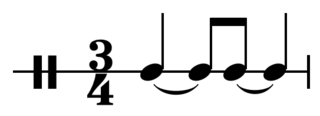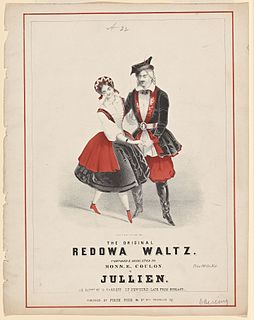 W
WThe waltz is a ballroom and folk dance, normally in triple time, performed primarily in closed position.
 W
WCanter time, canter timing or canter rhythm is a two-beat regular rhythmic pattern of a musical instrument or in dance steps within 34 time music. The term is borrowed from the canter horse gait, which sounds three hoof beats followed by a pause, i.e., 3 accents in 44 time.
 W
WCross-step waltz is a social ballroom dance in triple (help·info) time, performed primarily in closed position, to slower tempo waltz music. It is characterized by a "primary cross-step" where the Lead role crosses the right foot over the left, as the Follow role crosses the left foot over the right, on the first count of the musical measure. Cross-step waltz can travel and rotate like traditional waltzes, while the dynamic of the cross-step facilitates a wide range of traveling variations.
 W
WThe waltz is a ballroom and folk dance, normally in triple time, performed primarily in closed position.
 W
WWaltz is one of the five dances in the Standard category of the International Style ballroom dances. It was previously referred to as slow waltz or English waltz.
 W
WA redowa is a dance of Czech origin with turning, leaping waltz steps that was most popular in Victorian era European ballrooms.
 W
WThe Venezuelan waltz is a hall dance and accompanying musical genre that was popularized in 19th-century Venezuela.
 W
WViennese waltz is a genre of ballroom dance. At least four different meanings are recognized. In the historically first sense, the name may refer to several versions of the waltz, including the earliest waltzes done in ballroom dancing, danced to the music of Viennese waltz.
 W
WThe Walking Boston, sometimes designated the One Step Waltz, is a very simple dance in which many graceful figures may be introduced. It is done to the same music as the Hesitation Waltz and Dream Waltz.